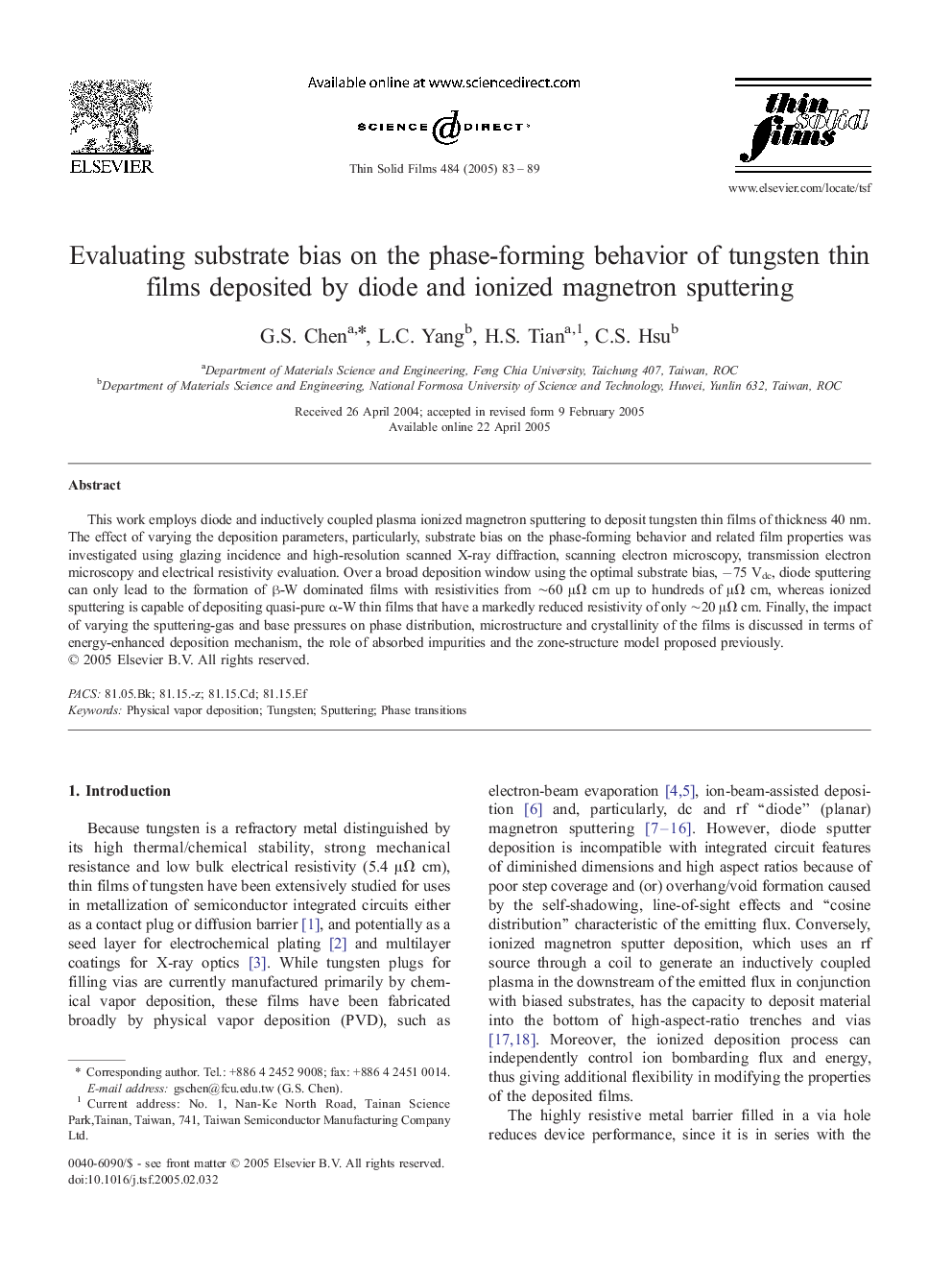| Article ID | Journal | Published Year | Pages | File Type |
|---|---|---|---|---|
| 9812526 | Thin Solid Films | 2005 | 7 Pages |
Abstract
This work employs diode and inductively coupled plasma ionized magnetron sputtering to deposit tungsten thin films of thickness 40 nm. The effect of varying the deposition parameters, particularly, substrate bias on the phase-forming behavior and related film properties was investigated using glazing incidence and high-resolution scanned X-ray diffraction, scanning electron microscopy, transmission electron microscopy and electrical resistivity evaluation. Over a broad deposition window using the optimal substrate bias, â75 Vdc, diode sputtering can only lead to the formation of β-W dominated films with resistivities from â¼60 μΩ cm up to hundreds of μΩ cm, whereas ionized sputtering is capable of depositing quasi-pure α-W thin films that have a markedly reduced resistivity of only â¼20 μΩ cm. Finally, the impact of varying the sputtering-gas and base pressures on phase distribution, microstructure and crystallinity of the films is discussed in terms of energy-enhanced deposition mechanism, the role of absorbed impurities and the zone-structure model proposed previously.
Related Topics
Physical Sciences and Engineering
Materials Science
Nanotechnology
Authors
G.S. Chen, L.C. Yang, H.S. Tian, C.S. Hsu,
